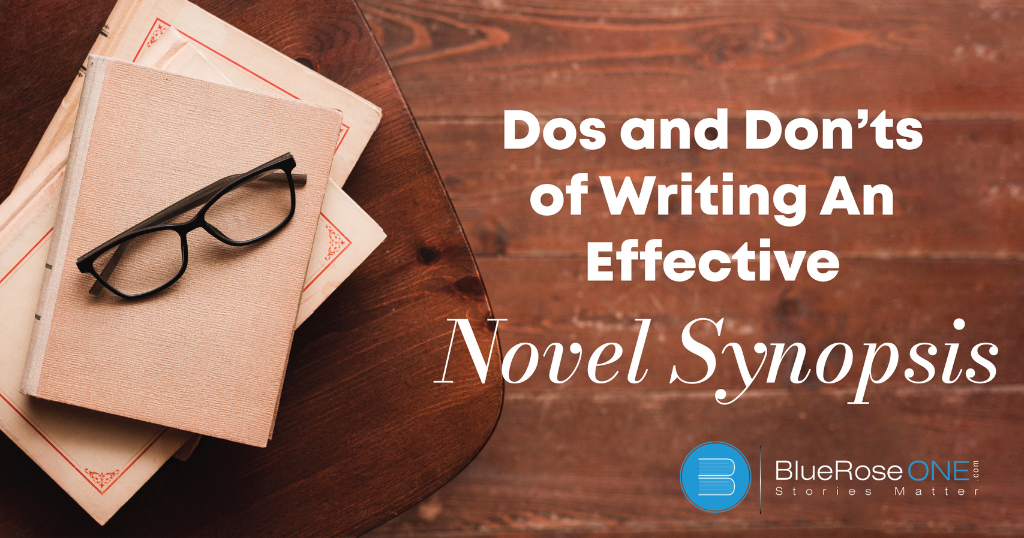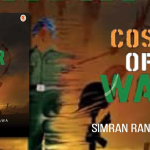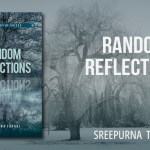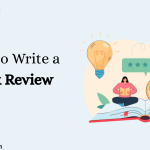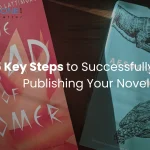Crafting a compelling novel synopsis is an art that requires finesse and a deep understanding of storytelling dynamics. In the intricate world of literary representation, a synopsis serves as a powerful tool, offering a condensed yet captivating preview of the entire narrative. This guide explores the dos and don’ts of creating an effective novel synopsis, providing insights into the purpose and methodology behind this critical piece of writing.
Understanding the Purpose of a Novel Synopsis
The novel summary is critical in providing a glimpse of the complete plot and encapsulating its key parts within a short framework of 500 to 800 words. Its primary goal is to present a detailed review of the work to possible agents and publishers, giving them a look into the substance of the story.
At its heart, the summary acts as a strategic instrument for encapsulating the novel’s major components. This involves introducing the main characters, establishing the main story arcs, and revealing the final resolution. The objective is to create a fascinating story that attracts the interest and intrigue of literary specialists, rather than just summarising.
The synopsis is an effective marketing tool since it condenses the narrative into a brief summary. It serves as a teaser, tempting agents and publishers to read the book further and highlighting the novel’s distinctive traits and storytelling attraction. This concise yet thorough summary serves as the initial point of contact, enabling industry professionals to delve into the complexity and depth of the whole work.
In essence, the novel description is a skillfully prepared pitch intended to pique the reader’s attention and curiosity. It strikes a fine balance between revealing enough to captivate without disclosing every detail. Writing a successful summary necessitates a great awareness of storytelling subtleties in order to condense the tale into an engaging narrative that leaves a lasting impression.
The Dos: Crafting a Captivating Synopsis
- Begin with a Strong Hook: Start your synopsis with a compelling hook that immediately grabs the reader’s attention. Whether it’s an intriguing question, a thought-provoking statement, or a vivid description, the opening should make agents and publishers eager to dive into your story. Example: In the heart of a bustling city, where shadows whispered secrets and neon lights painted tales of intrigue, a mysterious package arrived at Detective Emily Harris’s doorstep. Little did she know that unwrapping it would unravel a web of conspiracy that could shake the foundations of the city she swore to protect.
- Introduce the main characters with clarity: Clearly introduce your main characters, providing enough detail for readers to connect with them emotionally. Highlight their motivations, conflicts, and how they drive the narrative forward. Example: Emily Harris, a seasoned detective haunted by a past she can’t escape, finds herself entangled with the charismatic yet enigmatic Lucas Blackwood. As they navigate the city’s underbelly, each step reveals not only the darkness around them but also the scars they carry from their own histories.
- Outline the central conflict: Clearly articulate the central conflict of your novel. What challenges do your characters face, and what are the stakes? Convey the tension and urgency of the plot to keep readers invested. Example: When a high-profile politician’s daughter goes missing, Emily and Lucas are thrust into a labyrinth of corruption and power plays. As they dig deeper, they unearth a conspiracy that could shatter the delicate balance between the city’s underworld and its elite, putting them in a race against time to expose the truth.
- Showcase Character Development: Briefly touches on the evolution of your characters throughout the story. Show how they grow, change, or face challenges, emphasising the emotional journey that adds depth to your narrative. Example: As Emily battles her inner demons and grapples with a truth she never wanted to confront, Lucas confronts his own demons from a past life. Their journey isn’t just about solving a case; it’s a poignant exploration of redemption, forgiveness, and the resilience of the human spirit.
- Cover Major Plot Points: Outline the significant plot points and twists without delving into excessive detail. Highlight the key events that drive the narrative, maintaining a balance between providing enough information to pique interest and avoiding unnecessary spoilers. Example: From the pulse-pounding chase through dimly lit alleys to the heart-wrenching revelation in the abandoned warehouse, each step brings Emily and Lucas closer to the shocking truth. Betrayals, unexpected alliances, and a twist that no one saw coming—the narrative unfolds, leaving readers on the edge, craving the resolution they never saw coming.
- Convey the resolution: Clearly communicate how the story concludes. Address the major questions or conflicts presented earlier in the synopsis and provide a sense of closure. Example: As the city’s secrets unravel, Emily and Lucas expose a sinister plot that implicates those in the highest echelons of power. In a climactic showdown atop the city’s tallest skyscraper, they confront their own demons and bring the culprits to justice. Yet, the victory is bittersweet, leaving scars that time may never fully heal.
- Keep It Concise and Focused: Aim for clarity and conciseness. Avoid unnecessary details or subplots that may distract from the main narrative. Focus on the core elements that define your novel. Example: Striking a balance between the seedy underbelly of the city and the polished façade of political elites, the narrative meticulously follows Emily and Lucas through a maze of deception. The focus remains unwavering on the abduction case and its far-reaching consequences, steering clear of tangential details that may dilute the central narrative.
- Showcase Your Writing Style: Let your writing style shine through the synopsis. While it should be clear and concise, infuse it with the same tone and atmosphere found in your novel. This gives agents a glimpse into your writing prowess.
- Proofread and edit: Thoroughly proofread and edit your synopsis. Ensure it is free of grammatical errors and typos. A polished synopsis reflects your professionalism and attention to detail.
- Tailor It to Submission Guidelines: Customise your synopsis according to the submission guidelines of agents or publishers. Follow any specific instructions regarding format, length, or additional requirements.
The Don'ts: Pitfalls to Avoid in Your Synopsis
- Avoid Unnecessary Detail: In crafting a novel synopsis, brevity is key. While it’s essential to convey the main plot points, steering clear of unnecessary detail ensures that the synopsis remains focused and engaging. Omitting subplots and minor characters that don’t significantly contribute to the central narrative helps maintain a streamlined and impactful summary, allowing readers to grasp the essence of the story without being bogged down by superfluous information.
- Don’t Include Every Twist: A sense of mystery is crucial to enticing readers. While hinting at major plot twists in the synopsis adds intrigue, unveiling every surprise diminishes the incentive for readers to explore the complete novel. Balancing revelation and concealment ensures that the synopsis acts as a tantalising invitation, leaving enough unknown to captivate readers and encourage them to delve deeper into the story.
- Steer Clear of Ambiguity: While a degree of mystery is beneficial, ambiguity should be avoided. A synopsis should provide a clear understanding of the main characters, central conflict, and resolution. Ambiguity can lead to confusion and may deter literary professionals from delving further into the manuscript. Striking the right balance between intrigue and clarity ensures that the synopsis serves its purpose as a concise yet comprehensive preview of the novel.
- Don’t Rely on Vague Language: Precision in language is paramount in a novel synopsis. Vague or ambiguous language can lead to misunderstandings and dilute the impact of the narrative. Choosing words carefully and conveying the story’s essence with clarity ensures that literary professionals can grasp the novel’s unique elements and understand the author’s intentions, fostering a stronger connection between the synopsis and the complete work.
- Resist the urge to summarise every chapter. A common pitfall is turning the synopsis into a detailed chapter-by-chapter summary. However, the synopsis should provide an overarching narrative that entices without revealing every nuance. Focusing on the key elements that drive the story forward maintains the synopsis’s effectiveness, ensuring that literary professionals gain insight into the novel’s structure without getting bogged down in minutiae.
- Avoid redundancy: redundant information can be a detriment to the synopsis’s impact. Once a point has been made, resist the urge to repeat it. A streamlined and efficient synopsis captures and sustains the reader’s interest. Eliminating redundancy ensures that every word serves a purpose, contributing to the overall cohesiveness and clarity of the synopsis.
- Don’t Neglect Emotional Resonance: Beyond the plot, emotional resonance is a vital aspect of storytelling. A synopsis should emphasise the characters’ emotional journeys and the impact of key events. By highlighting the emotional core of the narrative, the synopsis becomes a more compelling and relatable introduction to the novel, forging a connection between the reader and the characters’ experiences.
- Steer Clear of Generic Language: Generic or clichéd language can detract from the uniqueness of the novel. Crafting the synopsis with specificity ensures that it stands out in a sea of submissions. Using vivid and original language to describe the plot, characters, and setting conveys the distinctiveness of the work, signalling to literary professionals that this novel offers something fresh and compelling.
- Don’t Overwhelm with Minor Characters: While a novel may feature a range of characters, the synopsis should focus on the main characters who drive the central narrative. Overwhelming the reader with a multitude of minor characters can dilute the impact of the synopsis and make it challenging for literary professionals to discern the core elements of the story. Prioritising the key characters ensures a more focused and impactful synopsis.
- Don’t Forget the Resolution: Providing closure is essential in a novel synopsis. Avoid leaving agents or publishers with unanswered questions. Clearly conveying how the story concludes gives the synopsis a sense of completeness and ensures that literary professionals can assess the narrative’s resolution. This final touch allows the synopsis to fulfil its role as a comprehensive and enticing preview of the complete novel.
Putting It All Together: A Sample Synopsis
Let’s apply these dos and don’ts to create a sample synopsis for a fictional novel:
“Shadows of Elysium” unfolds a captivating narrative of love, treachery, and political intrigue in the throbbing heart of New York City. When Emily Turner, a tough investigator tormented by a sad past, is assigned to investigate the high-profile kidnapping of a senator’s daughter, she is pushed into the abyss of corruption. The team navigates the maze of deceit with the mysterious Lucas Rodriguez, a former intelligence officer.
Emily and Lucas uncover a covert network reaching the highest levels of power as they peel back layers of the city’s underbelly. Their search culminates in a heart-pounding conclusion atop a tower, where they must confront not only the criminals but also their own demons. The settlement offers justice but leaves wounds, highlighting the cost of exposing the city’s deepest secrets.
Read: What is a Motif in Literature? Definition, Meaning and Examples
Crafting an effective novel synopsis is a skill that evolves with practice, feedback, and a keen understanding of storytelling nuances. By adhering to the dos and avoiding the don’ts outlined in this guide, you can create a synopsis that not only encapsulates the essence of your novel but also entices agents and publishers to delve deeper into your literary world.
As you embark on the synopsis-writing journey, remember that each novel is unique, and there is no one-size-fits-all approach. Tailor your synopsis to reflect the distinctive elements of your story, and let it serve as a compelling invitation for readers to immerse themselves in the enchanting world you’ve crafted. With perseverance and a commitment to honing your synopsis-writing skills, you’ll find yourself navigating the intricate landscape of literary representation with confidence and purpose.
Publish your book with BlueRoseONE and become a bestselling author. Don’t let your dream of becoming an author fade away, grab the opportunity now and publish your book – be it fiction, non fiction, poetry or more.

